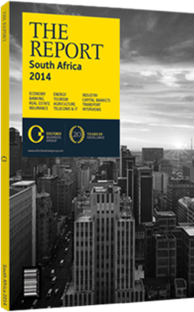OBG talks to Henry Laas, CEO, Murray & Roberts

Interview: Henry Laas
To what extent do South African construction companies rely on public infrastructure projects for their local order books?
HENRY LAAS: South Africa’s top engineering and construction companies tend to target large-scale infrastructure projects across the civil, energy and industrial sectors in both the country and the rest of the continent. The segment relies heavily on public infrastructure spending, consisting of developments such as power projects, roads, dams and bridges in the country and in the southern African region, and it does indeed need a steady pipeline of projects to support companies’ local order books.
Generally speaking, as a contractor, you should strive to have a balance between private and public sector work. In developing countries in particular, the public sector contribution tends to be a bit higher. There was a considerable amount of work on hand in the run-up to the 2010 FIFA World Cup, which kept the sector quite busy. But after 2010 projects slowed down in South Africa, and although there are currently a decent amount of public infrastructure projects in the pipeline, they have yet to materialise. As a result, many of the big construction firms now rely increasingly on international business.
How much will the Presidential Infrastructure Coordinating Commission (PICC) accelerate the development of strategic projects?
LAAS: The main objective of the PICC is to plan and coordinate infrastructure development initiatives across the country. Infrastructure investment is a key priority under the National Development Plan, and South Africa needs to maintain and expand its infrastructure in order to support economic growth and other social development goals.
I believe the PICC is a great initiative that should unlock bottlenecks in the development process, which to date has been quite slow. However, it may still be too early to comment on the success of the PICC and whether it will make a meaningful contribution to bringing these major infrastructure projects to the market. The areas to be focused on are broad, including sectors such as energy and transport, while the planned developments include strategic initiatives such as power generation, road, rail and port infrastructure, as well as new hospitals and schools.
The successful completion of these projects will come down to how effective implementation is. In this regard, the private sector has a large role to play in collaborating with the government in order to ensure that projects come to fruition, especially where the public sector may be lacking in skills or capacity.
To what degree is the domestic supply of affordable building materials sufficient?
LAAS: We believe that the supply of building materials is sufficient for meeting local demand. Our company prioritises supporting South African industries before we begin looking beyond our domestic shores for inputs. In this respect, we have had a reasonable amount of success in sourcing local content thus far. On average, South African building and construction costs are very competitive. However, we have seen that factors such as rising inflation and the South African labour environment, as well as the resultant low productivity, contribute to rising input costs.
What impact has the Competition Commission’s investigation had on the sector?
LAAS: The outcome of the Competition Commission’s Fast-Track Settlement Process regarding historical collusive practices, as well as the publicity it has attracted, has negatively impacted the construction sector’s reputation. It has affected relationships with many stakeholders, including clients. There is a perception that the government does not trust major construction firms in South Africa, and the industry has a ways to go in terms of rebuilding its relationships with the government and the public sector.
You have reached the limit of premium articles you can view for free.
Choose from the options below to purchase print or digital editions of our Reports. You can also purchase a website subscription giving you unlimited access to all of our Reports online for 12 months.
If you have already purchased this Report or have a website subscription, please login to continue.

